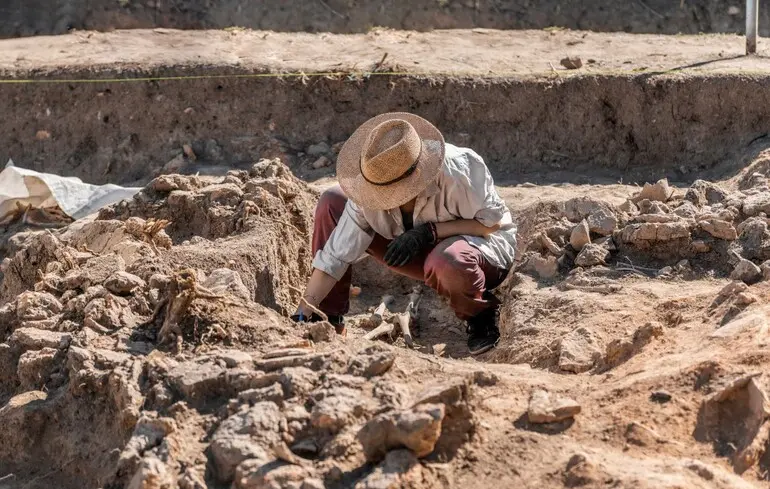Unique Archaeological Discovery in Spain: Well-Preserved Neolithic Tomb Opens New Horizons in Ancient Culture Research

In the region of Andalusia in southern Spain, archaeologists made an extraordinary discovery — they uncovered one of the most valuable and best-preserved tombs from the Neolithic era.
It is a dolmen located in the La Lentejuela necropolis in the province of Málaga, boasting over 5,000 years of history.
The impressive structure, stretching over 13 meters, continues to mystify researchers and offers insights into ancient burial rites, social hierarchy, and trade connections of the population of the Iberian Peninsula during the 3rd millennium BCE.Excavations, conducted over several years by the University of Cádiz team led by scholars Eduardo Vijdande and Serafín Bessera, revealed a wealth of archaeological artifacts.
The project, titled “Monumentality, Time, and Society — The Megalithic Phenomenon at La Lentejuela Necropolis,” received backing from the Andalusian Ministry of Culture and was funded by the municipality of Teba.
The discovery impresses not only by its size but also by its remarkably preserved state.
Inside, archaeologists documented several ossuaries — chambers for storing bones of the deceased — and found burial objects made from unusual regional materials such as elephant ivory, amber, and marine shells.Among the artifacts are flint arrowheads, large blades, and a unique halberd, indicating the high status of those interred.
These findings demonstrate extensive trade networks, as materials like ivory and amber suggest active contact with distant territories.
The presence of marine shells deep inland reflects the symbolic importance of the sea in the cultural practices of the era.”We are dealing with one of the most monumental and complete megalithic structures in Andalusia,” stressed Dr.
Bessera.
His colleague, Dr.
Vijdande, noted that the site’s excellent preservation allows researchers not only to reconstruct burial rituals but also to gain deeper understanding of ancient beliefs and worldview of the communities inhabiting southern Spain over five millennia ago.Furthermore, the findings highlight the significance of non-native materials, which indicate active trade relations with more remote regions.
Modern technology, including satellite imagery, helped uncover another remarkable discovery — a wrecked sword, providing evidence of interregional trading and cultural exchange.
Professor Juan Jesús Canteo emphasized that these findings prove active and sophisticated trading networks, facilitating the flow of goods and ideas.A dolmen is a megalithic tomb composed of large vertical stones supporting a horizontal capstone.
Such structures, common from the Neolithic to the Bronze Age, served as sites for collective burials and played important ritual roles.
Discoveries like this enrich our understanding of the European megalithic phenomenon.Additionally, in Italy, archaeologists unearthed an untouched Etruscan tomb dating back approximately 2,600 years.
Its pristine condition, along with the remains of four individuals and over 100 artifacts, offers invaluable insight into the ancient civilization’s burial practices and social hierarchy.

